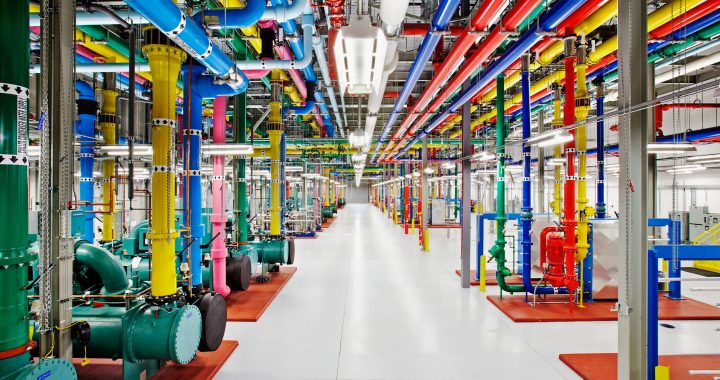Systems Overview – Mechanical Electrical Plumbing (MEP)
Mechanical – HVAC:
- HVAC Plant (central M local) – Base Load Capacity
- Check Plant Sizing; Rule of thumb: 350 sq ft / ton or 400 cfm / ton
- Check Spare Capacity (Chilled Walled Supply / Condensor Water Supply)
- Age of Major Equipment – Preventative Maintenance and Emergent Service History
- Energy Economizer Strategy (Water Side/Air Side)/Load Shedding
- Refrigerant Type(CFC Free From Year 1998; e.g.: R-1 31, R-134, etc.)
- Chemical Water Treatment / Filtration / Coupon Rack Sampling
- Temperature Control System and Building Management System
- Tenant Complaints / F AQ Testing / Mold & Fungus
- Required Certificated Plant Operators / After Hours Use
- Boilers & Fuel Tanks / Utility Steam or “Other”
- Energy Consumption Conservation Codes / Water Consumption
- Patent Distress – Leaks, Excessive Noise / Vibration / Not Clean
- Life Safety Interface (Smoke Detection / Shutdown / Smoke Purge) and
- Emergency Power provisions.
- Supplemental Cooling (EMR’ s, MDF / IDF, etc.) and “N+ 1” Applications
Mechanical – Fire Safety:
- Review Sprinkler Certification
- Review Fire Department Inspection Approval Letters
- Inspect Fire stopping at Slab Perimeter, Rated Partitions, Shafts and Risers
- Perform Fire Pump Test including Emergency Power Test to Roof Manifold
- Check for type of Sprinkler System – Wet/Dry /Pre-action System
- Review Fire Department Certification of Sprinkler System
- HVAC auto shut-down on Alarm / Active Smoke Purge + Reset
- Standpipe Hose Racks / Fire Extinguishers / Fire Warden Stations / Staff
Electrical – Electrical Power Systems
- Check Incoming Service Contingency
- Review Service “Outage” History
- Review Power Billing History for Actual Usage
- Establish Summer Peak Demand and Available Spare Capacity
- Check Ground Fault Main Gear and Distribution (Sensing and Tripping)
- Check for Main Switch Reset Failures and Tie Bus Switching
- Check Main Gear and Distribution Material (Copper, Aluminum, or Mixed)
- Visit Switchgear Room – Check for Active Leaks, Corrosion, Clearance
- Perform Infrared Thermography Scan and List Corrective Work Requirements
- Review Tenant Distribution and Diversity
- Check Local Transformers
- Check Panel Spare Capacity
Electrical – Low Voltage Systems
- Review Tenant Tel / Data Riser Capacity, Floor Closet Capacity
- Check Tel/Data Fiber Backbone
- Check for Equipment Induced Harmonics, Other Distortion and Filtering Problems
- Low Voltage Systems – Security, Shade Control, Loading Dock Intercom
Electrical – Emergency Power and Lighting
- Check Emergency Generator(s) Capacity, Condition and Performance
- Check Emergency Load Inventory and Spare Capacity
- Check the Condition of Fuel Oil Tanks and Auxiliaries
- Perform “Pull-the-Plug” Test by Killing Power outside the Building
- Review Test Logbook
- Lightning Protection – Check UL Mater Label and Recertification
Electrical – Fire Safety: Fire Alarm System
- Fire Alarm System Certification / Supervised Zone “Troubles”/ Handicap
- Combo Speaker Strobe Annunciators
- Evacuation Plan and Required Signage
- Elevator Interface for “Fireman’s Recall”
Electrical – Elevators
- Check OEM Manufacturer; Local Supplier and Service Agreement
- Type: Freight/Passenger
- Car Capacity and Cab Dimensions
- Age of Equipment
- Tenant “Wait Time” Complaints
- Preventive Maintenance
- Emergency Service History
- Professional Consultant’s Evaluation
- Accessibility Compliance
- Group Traffic Logic
Plumbing
- Check Sufficiency of Water Pressure
- Check Sufficiency of Hot Water Storage + Circulation
- Check Age of Equipment & Piping
- Check for Leak and/or Poor Flow History
- Piping Materials and Jointing (Bi-Metallic Corrosion, etc.)
- Review Potable Water Testing Reports – Heavy Metals, Turbidity, Biologic
- Appraise Condition of Stoneware and Fittings
- Check Water Consumption/Savings
- Review Accessibility Compliance of Sanitary ware and Fitting
- Ensure presence of RPZ or Double Flow-Check Type Backflow Preventer(s)
- Ensure Cross-tie to Fire Service
- Ensure presence of Exercise Valves
- Review Critical Valve Access
- Review Condition of Sewer Connection(s), Ejectors and House Trap
- Check Roof / Plaza Drains and Leaders
- Check Wood / Steel Water Tanks
